Important: Piitaistakis Ridge is accessed by crossing private land. Previously the land-owner allowed hikers to use the trail, with the condition that they were respectful of the land. As of summer 2022 the land has changed hands. The new owners have not put up signs or fencing to discourage hikers, but nor has anyone received confirmation that the previous arrangement still stands or that hikers are still welcome.
In spring of every year, thousands of eagles flying north to their northern breeding ranges in Yukon and Alaska converge above Piitaistakis Ridge, the southern tip of the Livingstone Range. From here they trace their way along the front ranges of the Rocky Mountains to their destination. In autumn the route is reversed, and they once again glide over Piitaistakis Ridge on their way home. The name of the ridge reflects the long-held knowledge of the significance of this place among the Pikanii Blackfoot. (Piitaistakis means “place of the eagles”.) The ridge is today more often referred to by the far less romantic name “Raptor Migration Viewpoint.”
Near Aurum Falls and Flake Falls, the hike up to Piitaistakis Ridge is one of my absolute favourites I’ve done in the Crowsnest Pass. There are enough gorgeous panoramic views to keep your eyes looking down that it’s easy to forget to glance up to scan for eagles. It’s a relatively easy hike, thanks to no small amount of elevation being gained in the car before even starting hiking! The trail leads up in and out of field and forest, eventually leading past some old mining debris that can be explored before continuing up the ridge. This short Crowsnest Pass is definitely one I’m going to do again.
Continue reading this blog post for everything you need to know to experience the Piitaistakis Ridge hike in the Crowsnest Pass for yourself, including distance, elevation gain, how to get there, the best time to visit, and lots of photos of my experience.
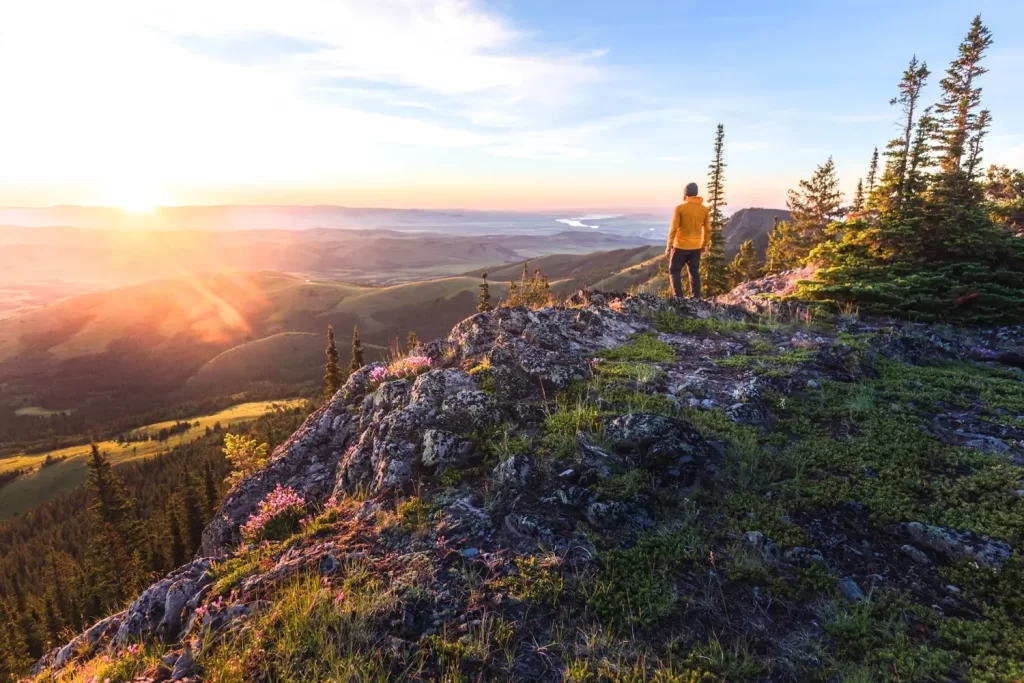
When hiking it’s important to avoid harmful practices such as disturbing plants or rock-stacking, or removing any natural object from flowers to rocks, as it’s important to leave the environment as natural as possible for the animals and for fellow hikers to enjoy in perpetuity. As many flowers as there are, there are few enough that if we all took one, then there wouldn’t be any left. Take only photos, leave only footprints.
If you haven’t heard of Leave No Trace principles, they’re also really essential to read up on before heading anywhere into the outdoors in general. Following these important principles basically means doing your best to leave beautiful places like Piitaistakis Ridge as good (if not better) than you found them, both for their preservation and for the enjoyment of other visitors.

Piitaistakis Ridge Round Trip Details
Distance: 7.8 KM / 4.8 MI
Elevation Gain: 496 M / 1627 FT
Hiking Time: 2 HRS
Hiking & Safety Tips
- Prepare for the possibility of wildlife encounters. Bear spray is a must whenever travelling in bear country, as well as learning how to use it. Though your chance of an aggressive bear encounter is low, it is always better to be prepared with bear spray. Bear bells are proven to be an ineffective bear deterrent, and are actively discouraged by Parks Canada. The best way to let bears know you’re around is simply to use your voice. Make sure to keep a respectful distance from wildlife and never feed the animals. It may seem kind but it doesn’t just kill wildlife and put people in danger, it’s also in many cases illegal.
- Research current trail conditions and make sure you are well-informed about the route before you leave, and assess if it is within your capability. Be aware of what time it gets dark and check the weather forecast. Make sure to tell someone where you’re going and when you expect to return. Every year as more and more people try hiking for the first time, the number of rescues goes up. Being prepared is the best defense.
- Pack everything you need for a successful hike, including enough water and energy-rich snacks. Remember to pack out everything you pack in though – don’t expect to find a convenient garbage can halfway up the trail. Bring appropriate layers (remember you’ll warm up once you start hiking) and sun protection. Hiking poles may be helpful but are not required. In addition to not leaving any garbage on the trail yourself, I highly recommend bringing a garbage bag and collecting any trash that you do see on the trail. You’re guaranteed to make the hike up Piitaistakis Ridge a more enjoyable experience for the next person.
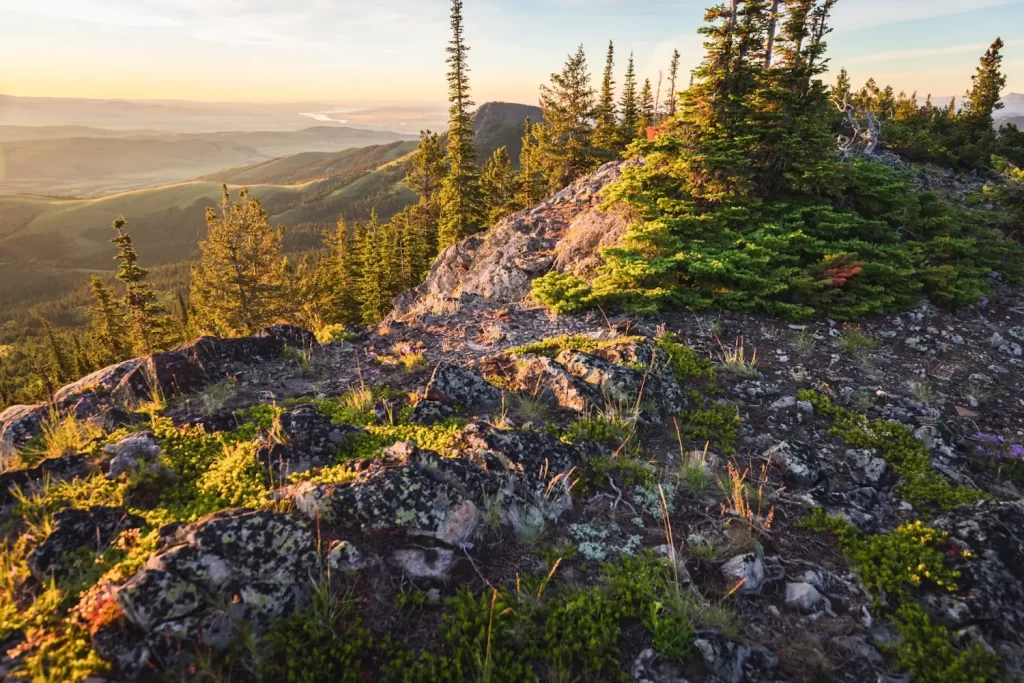
How to Get to Piitaistakis Ridge Trailhead
Probably the most challenging part of the Piitaistakis Ridge hike is the drive up there.The turn-off from Highway 3 is near the town of Frank in the Livingstone PLUZ. Just west of the large rockslide (you won’t miss it), follow the well-marked turn-off north towards the Frank Slide Interpretive Center. After heading fairly straight uphill, the road takes a hairpin turn to the right. Ignoring this turn, leave the road by continuing straight ahead across a Texas gate onto a rough gravel road. This is the same road to get to Aurum Falls and Flake Falls. From here the road is rough and potholed, and leads steeply straight up to a small parking area. The road only gets tougher as it goes, so some may choose to pull off before the top and walk the remaining part of the way. (I drove up at night and parked the Kia Soul on the side of the road before the top, but in daylight I saw I could definitely have driven up the rest of the way.)
Click here to open the exact trailhead location in Google Maps.
Hiking Piitaistakis Ridge
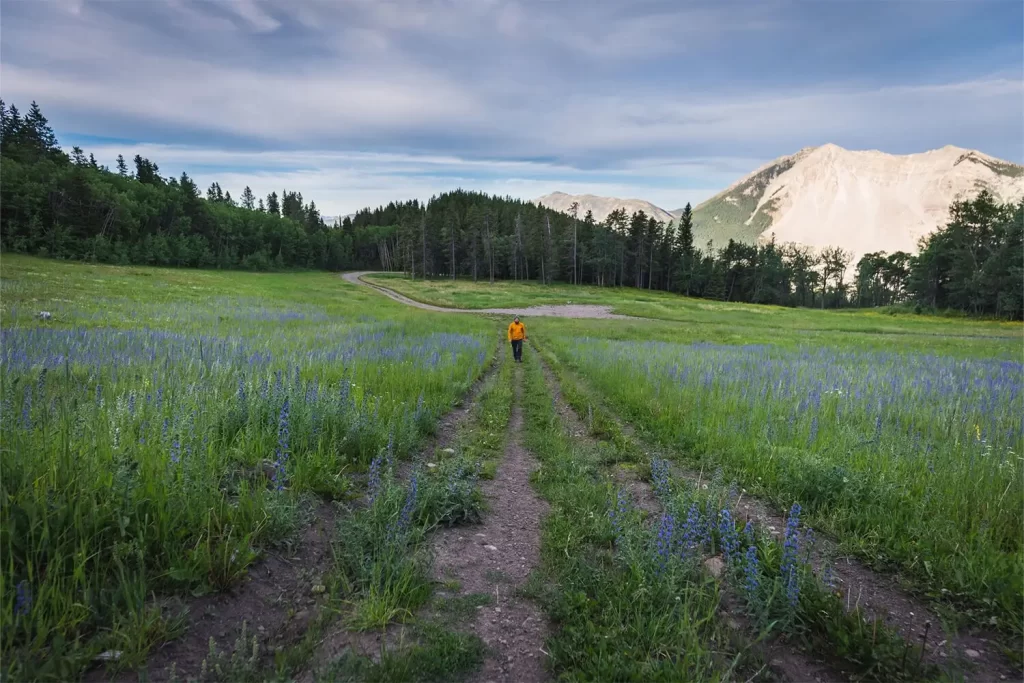
Setting up from the clearing where I suggest parking. Turtle Mountain in the distance.
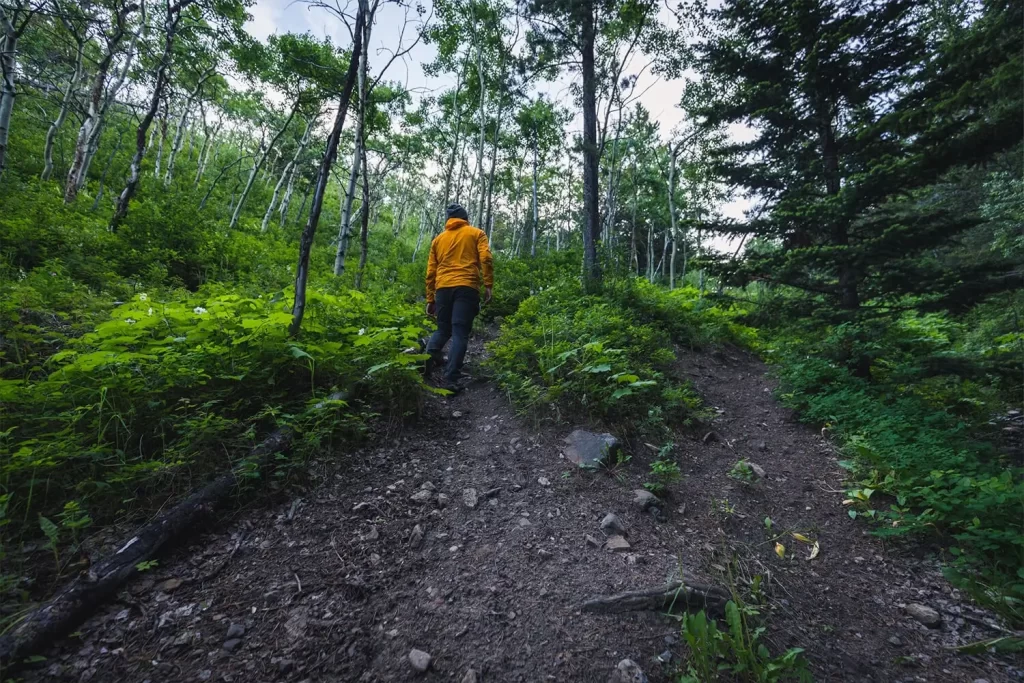
Left or right doesn’t matter here.
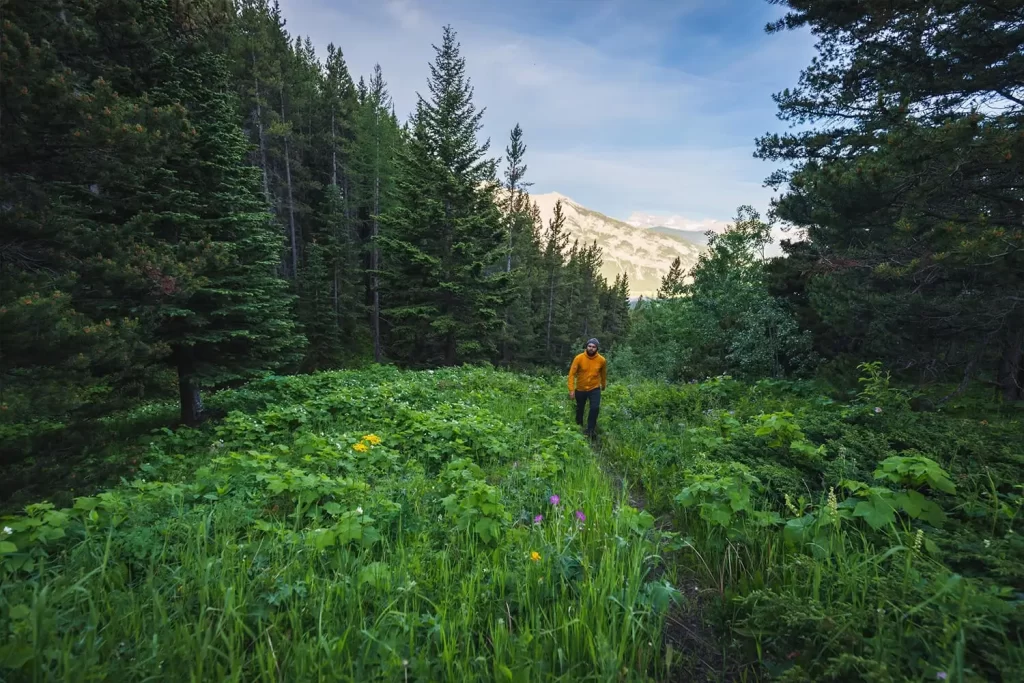
Heading up through the lovely vegetation.
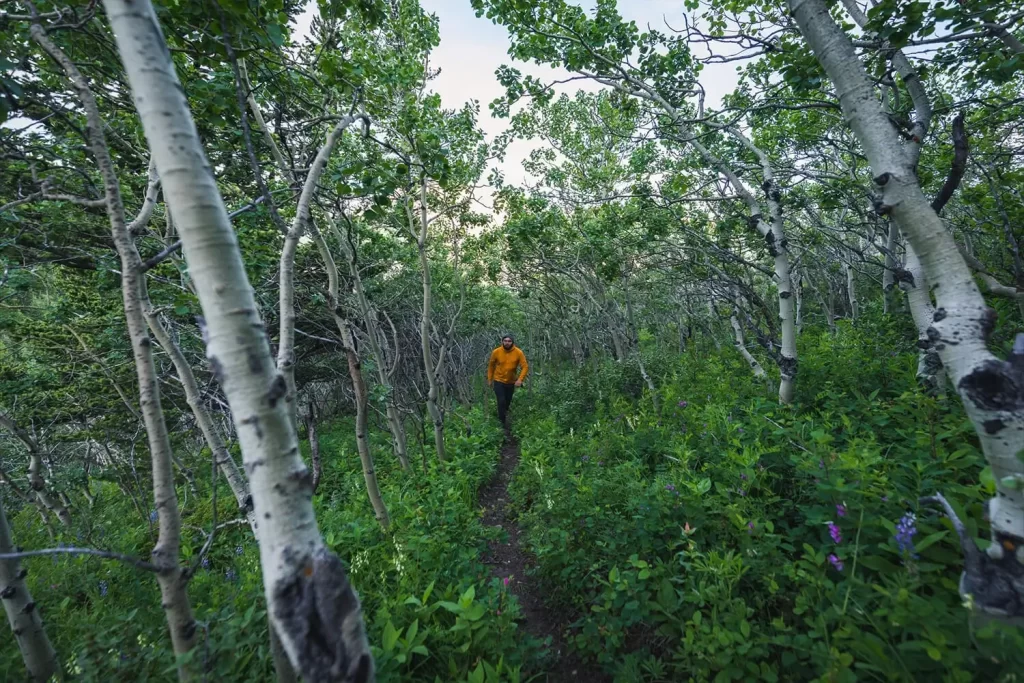
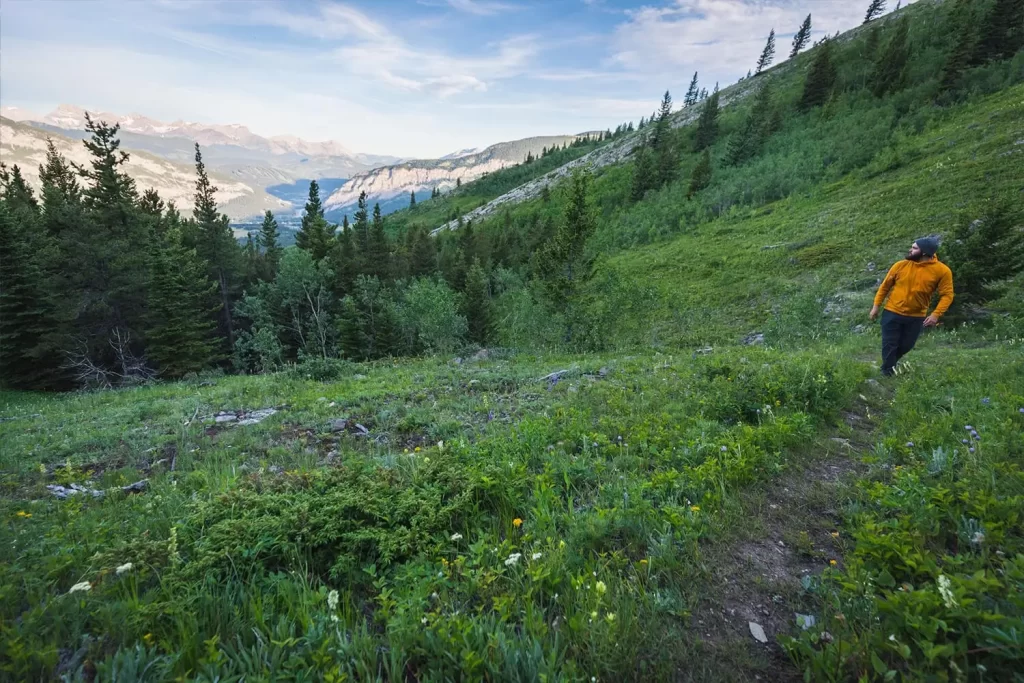
Pleasant views of the Crowsnest Pass starting to open up.
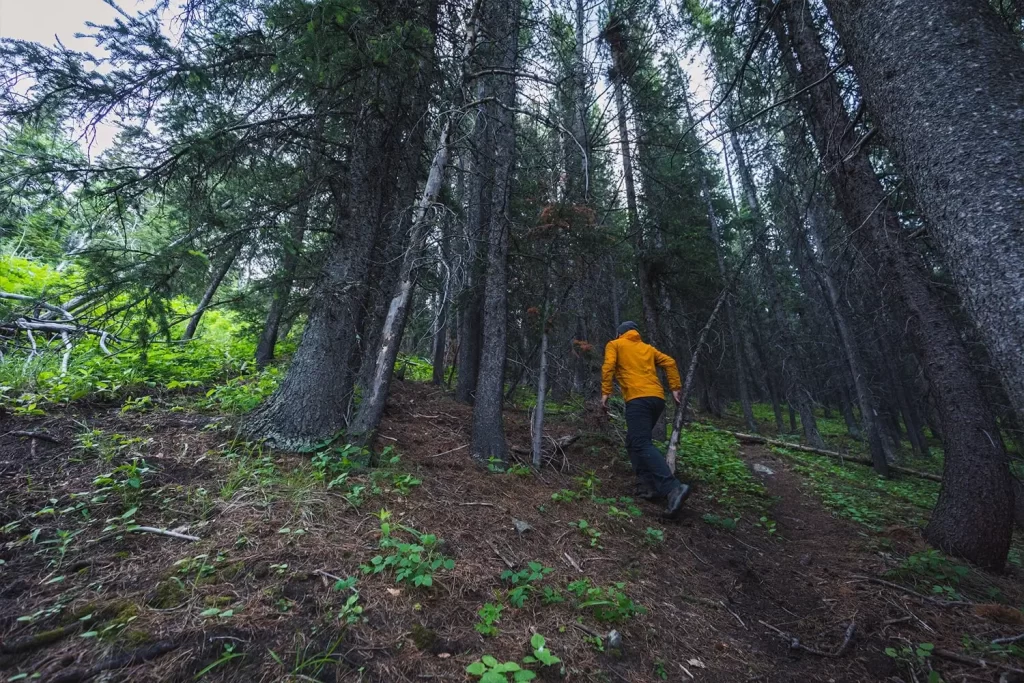
Keeping left as the trail re-enters the woods and following up alongside the clearing on the left.

The trail joins back into the clearing. Visible in the center is the approximate way up.
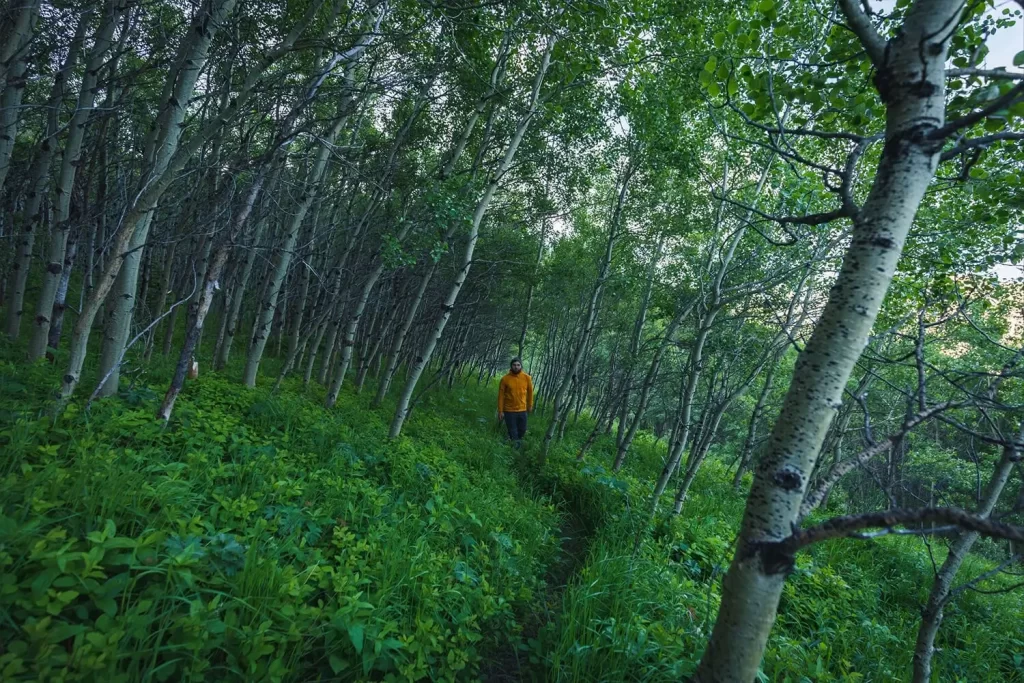
The trail continues alongside the very edge of the clearing.
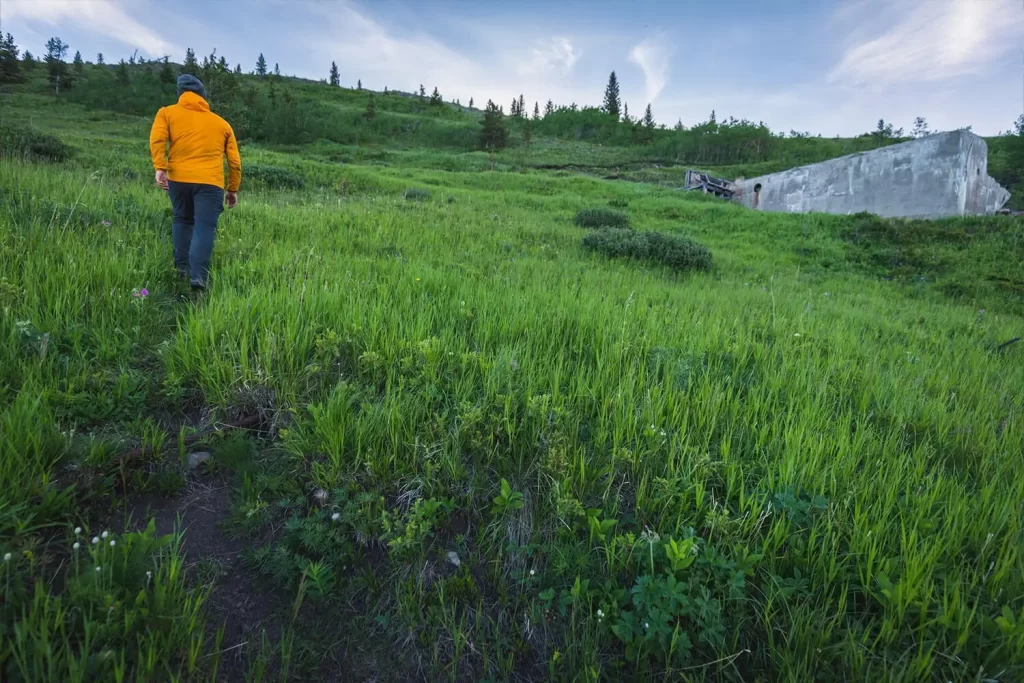
Out in the open again.

Walking past an abandoned mine structure.
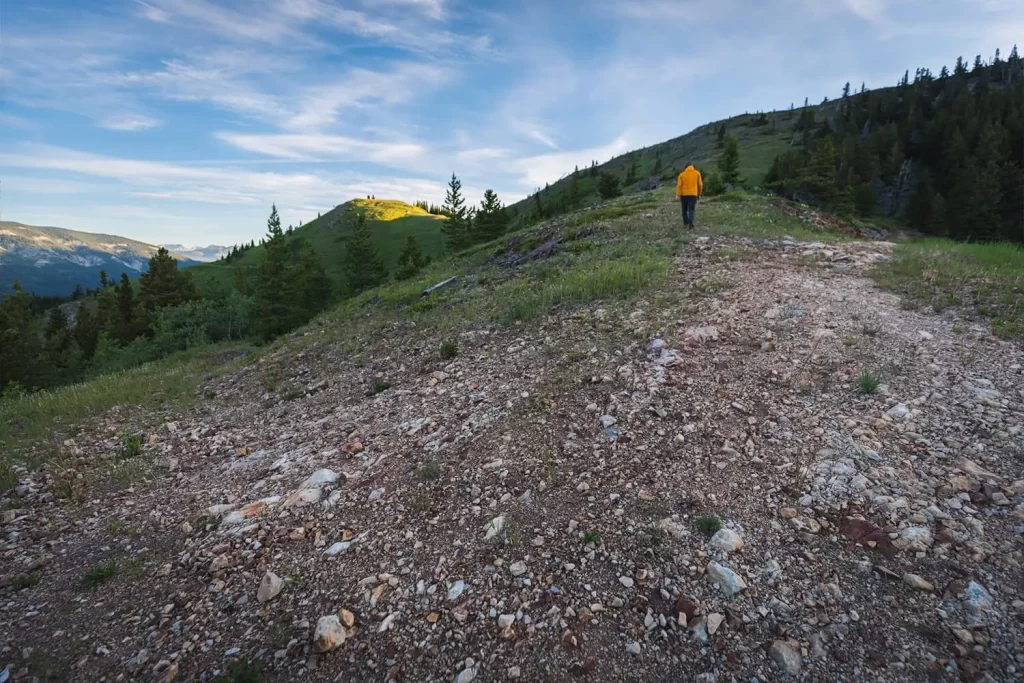
Heading up the grassy spine of the ridge. The trail is faint at times here.
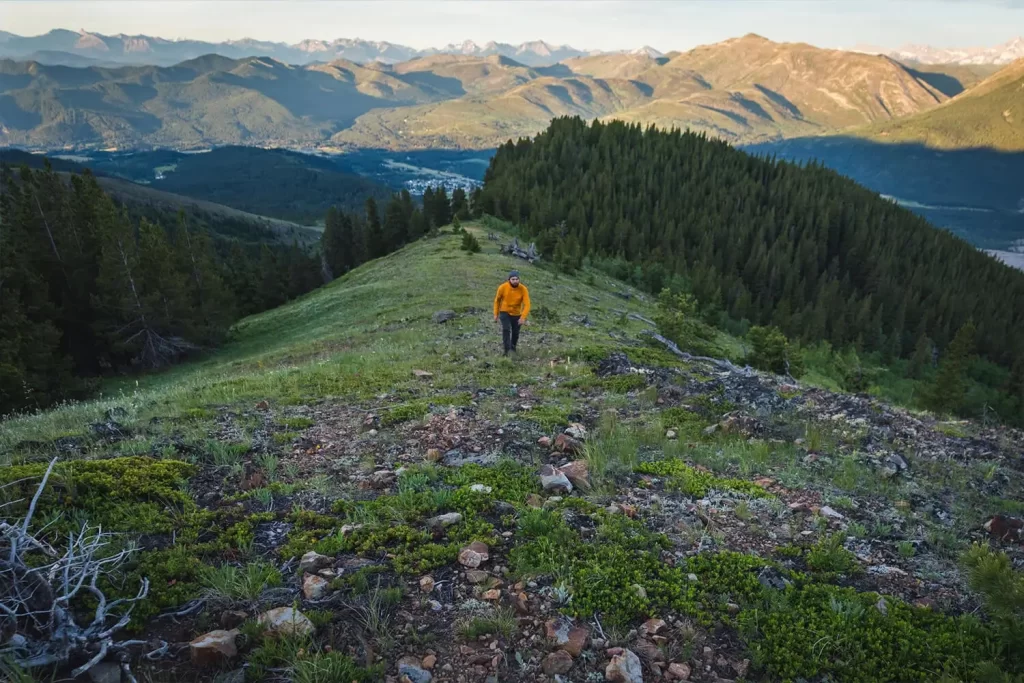
Gorgeous views while ascending he ridge.

The rocky ridge summit.
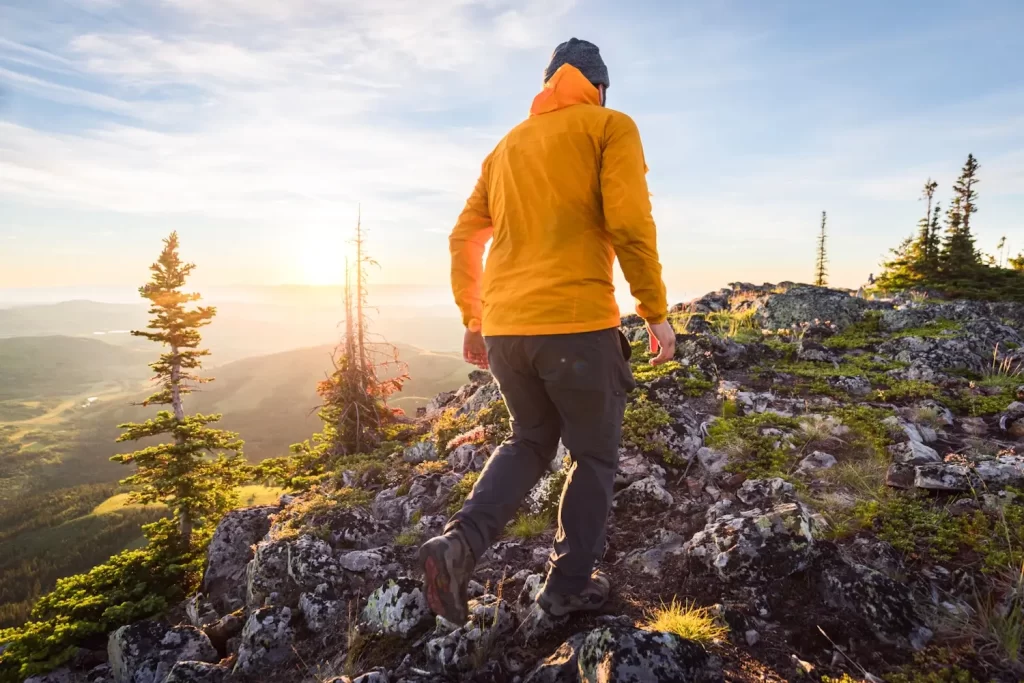
The top of Piitaistakis Ridge.
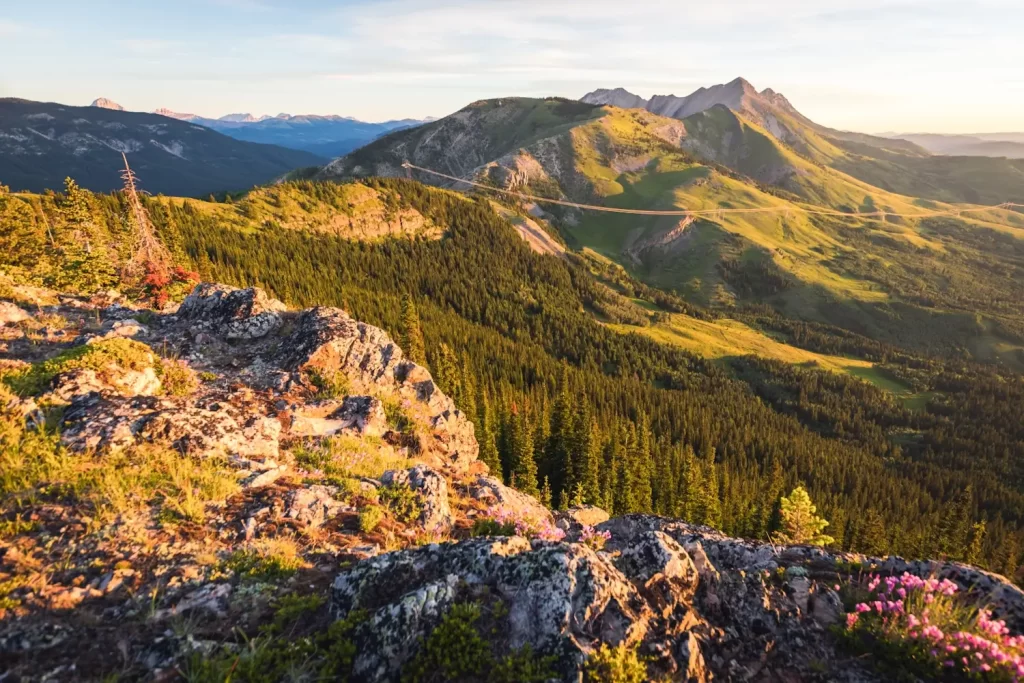

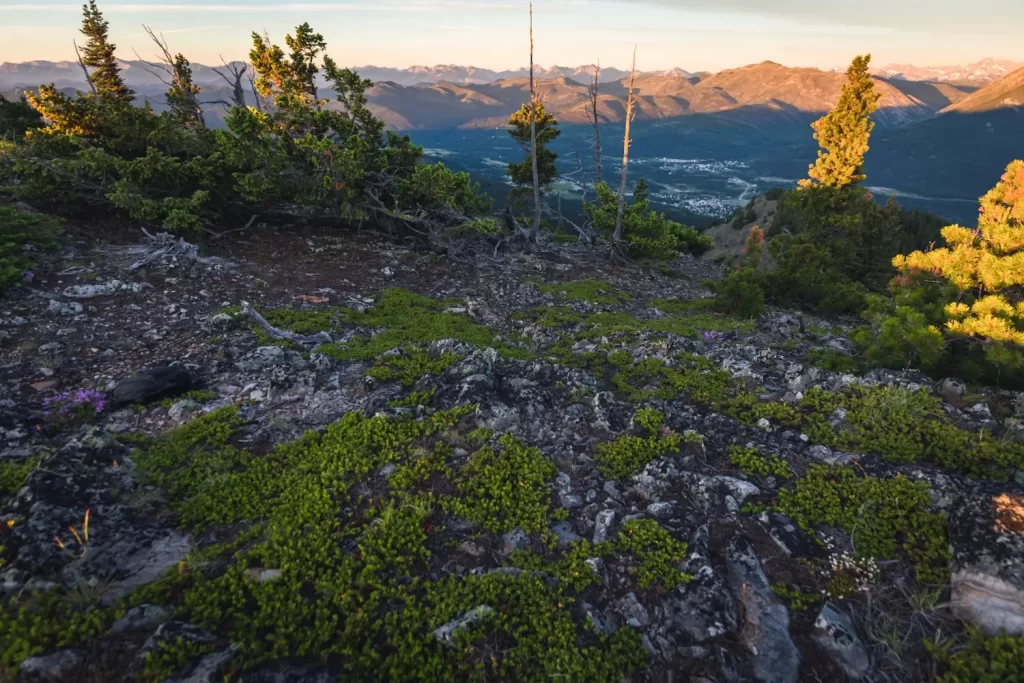
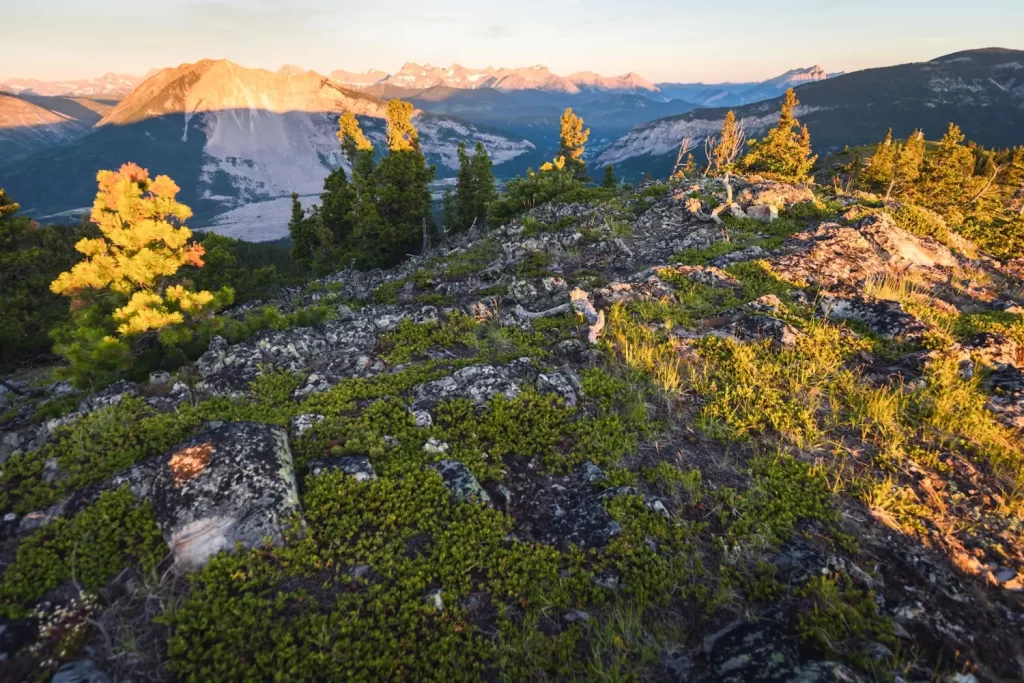
Recommended Hiking Gear



Water is a must whenever I’m hiking, especially if the sun is going to be out. My favourite water filter I’ve used is the Katadyn BeFree 0.6L, which unlike other water filters I’ve used packs up really small and lightweight. For hikes where I know there won’t be any readily available water sources along the way, I make sure to bring my own. The Hydrapak Stow 1L bottle is my go-to, for the same reason that it’s made of a soft plastic that folds up and doesn’t take up any more extra space than necessary in my pack. Finally, Aquatabs are another great option for purifying water, with one tablet being suitable for one litre of water. I previously used the Grayl water filter while travelling internationally, and though I found its hard body more convenient for day to day use and easier to drink from, it has a little too much bulk for my fast-and-light style of hiking.



The secret to all my photos of gorgeous sunset and sunrise mountaintop views? A lot of hiking in the dark. And let me speak from personal experience when I say that the last thing that you want to happen when hiking is to be caught in the dark without a headlamp. I used the Black Diamond Spot 400 for years and it worked great – until I lost it on top of a mountain somewhere. The only downside to it was having to worry about the batteries dying, though there’s also a slightly more expensive version that has a rechargeable battery. Nowadays I’m using the Petzl Actik Core, which is a bit pricier than the more budget-friendly Black Diamond, but is also brighter, more comfortable (in my opinion), and has a hybrid power system that is rechargeable but can also take AAA batteries if needed.
You won’t see me using trekking poles on shorter hikes often – but on long hikes and backpacking trips, as well as certain scrambles, they are an absolute lifesaver. I’ve invested in a high quality ultra-lightweight pair of MSR DynaLock Ascent carbon poles which, while pricey, I don’t regret one bit. If you’re not entirely sure how much use you’re going to get out of a pair of trekking poles, the best budget-friendly option would be the Trekology Trek Z 2.0. Amazon does sell a lot of cheaper Made in China-style trekking poles for cheaper, but these usually are much much heavier and not worth buying.
All the best and most long-lasting cables and power banks I’ve ever owned have been Anker. I once had a phone cable from them that lasted me over three years of daily use! That’s why I keep an Anker PowerCore Essential 20K power bank on me. Like many people I use my phone for a lot of stuff when hiking (checking in with family, using online maps, taking photos, flying my drone) so I like to be prepared for that low battery warning by having a backup power source on me just in case.



The only socks I ever buy for myself are from Darn Tough, and I almost always make sure to wear them when hiking. After years of having no problems only wearing these comfortable and rugged socks for hikes, I accidentally wore a pair of no-name socks on a hike last year and ended up with blisters on both feet. Safe to say I’m back to sticking with the Darn Tough. And the best part? They have a lifetime guarantee, meaning that if they ever wear out you can send them back for a brand new pair. For hiking footwear I go between a pair of lightweight approach shoes for quick and dirty mountain ascents or anything involving scrambling and more heavy-duty boots for longer treks. I’ve worn a couple different versions of the lightweight but super durable Arc’teryx Konseal FL 2 approach shoes for a few years now and am very impressed with the durability. I also really like the thick toecap that keeps me protected every time I stumble into a root or large rock. For longer, tougher, or muddier treks I rely on my LOWA Camino EVO GTX, which I find insanely comfortable and made of very high quality.



I wear my Ar’teryx Gamma Lightweight Pants on every single hike I go on, and on many days when I’m not hiking. After several years of abuse they are still holding together extraordinarily well, with only a few small holes from where I’ve fallen down and some slight stains from being repeatedly coated with mud. They’re lightweight, breathable, and super comfortable. For lightweight and breathable hiking tops I’m a big fan of both the Patagonia Capilene Shirt and the MEC Core Shirt. My Arc’teryx Squamish Hoody shows up in a lot of my photos. It’s super lightweight and packable, and does a great job of cutting the wind while also being pretty breathable. I also have an Arc’teryx Atom Hoody and Arc’teryx Beta LT that I pull out for cooler or wetter conditions.
I hope you enjoyed this guide to hiking Piitaistakis Ridge in the Crowsnest Pass! Feel free to leave any questions in the comment section below or to contact me directly via social media.
